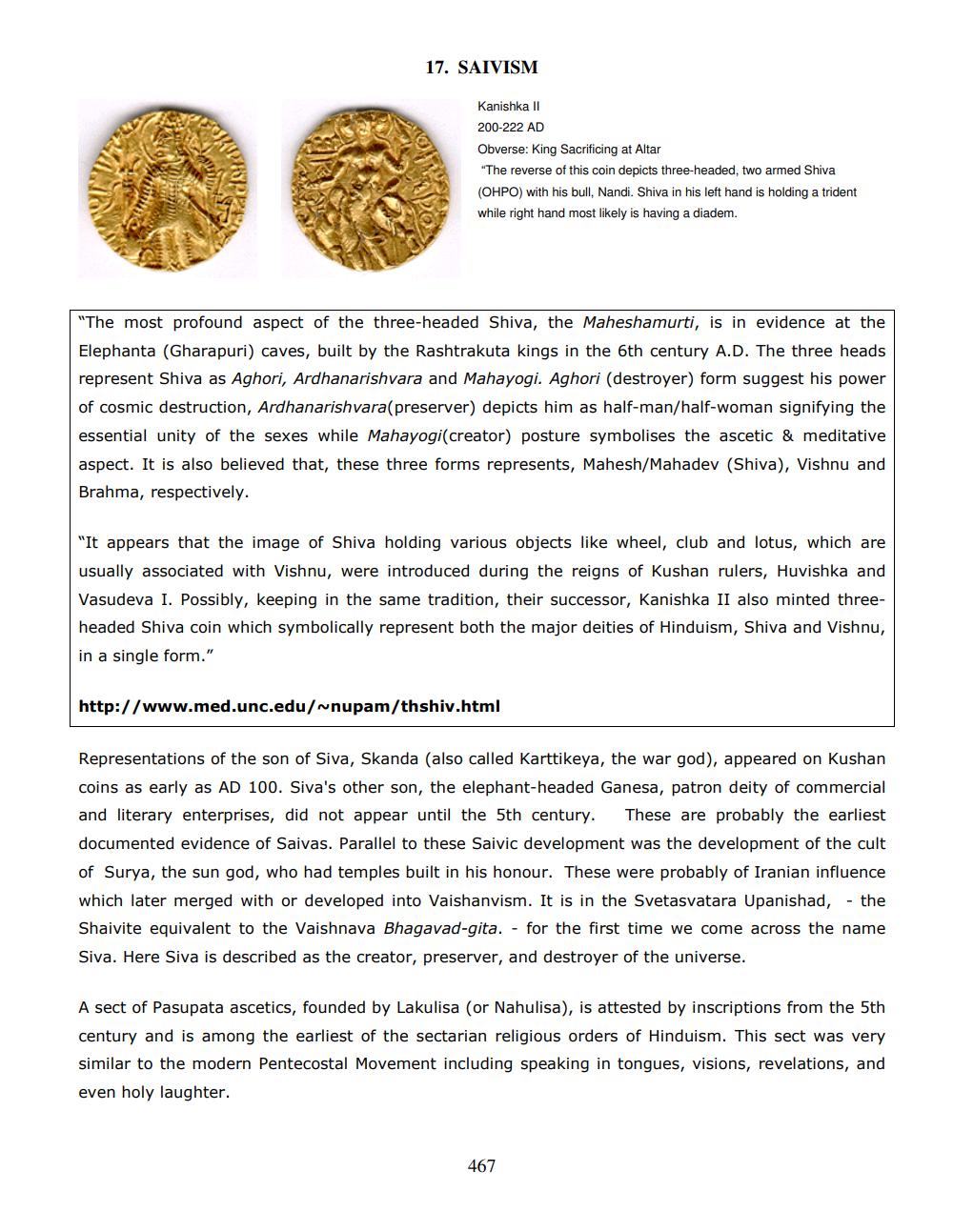________________
17. SAIVISM
Kanishka 11 200-222 AD Obverse: King Sacrificing at Altar "The reverse of this coin depicts three-headed, two armed Shiva (OHPO) with his bull, Nandi. Shiva in his left hand is holding a trident while right hand most likely is having a diadem.
DYN
21
"The most profound aspect of the three-headed Shiva, the Maheshamurti, is in evidence at the Elephanta (Gharapuri) caves, built by the Rashtrakuta kings in the 6th century A.D. The three heads represent Shiva as Aghori, Ardhanarishvara and Mahayogi. Aghori (destroyer) form suggest his power of cosmic destruction, Ardhanarishvara(preserver) depicts him as half-man/half-woman signifying the essential unity of the sexes while Mahayogi(creator) posture symbolises the ascetic & meditative aspect. It is also believed that, these three forms represents, Mahesh/Mahadev (Shiva), Vishnu and Brahma, respectively.
"It appears that the image of Shiva holding various objects like wheel, club and lotus, which are usually associated with Vishnu, were introduced during the reigns of Kushan rulers, Huvishka and Vasudeva I. Possibly, keeping in the same tradition, their successor, Kanishka II also minted threeheaded Shiva coin which symbolically represent both the major deities of Hinduism, Shiva and Vishnu, in a single form."
http://www.med.unc.edu/-nupam/thshiv.html
Representations of the son of Siva, Skanda (also called Karttikeya, the war god), appeared on Kushan coins as early as AD 100. Siva's other son, the elephant-headed Ganesa, patron deity of commercial and literary enterprises, did not appear until the 5th century. These are probably the earliest documented evidence of Saivas. Parallel to these Saivic development was the development of the cult of Surya, the sun god, who had temples built in his honour. These were probably of Iranian influence which later merged with or developed into Vaishanvism. It is in the Svetasvatara Upanishad, - the Shaivite equivalent to the Vaishnava Bhagavad-gita. - for the first time we come across the name Siva. Here Siva is described as the creator, preserver, and destroyer of the universe.
A sect of Pasupata ascetics, founded by Lakulisa (or Nahulisa), is attested by inscriptions from the 5th century and is among the earliest of the sectarian religious orders of Hinduism. This sect was very similar to the modern Pentecostal Movement including speaking in tongues, visions, revelations, and even holy laughter.
467




